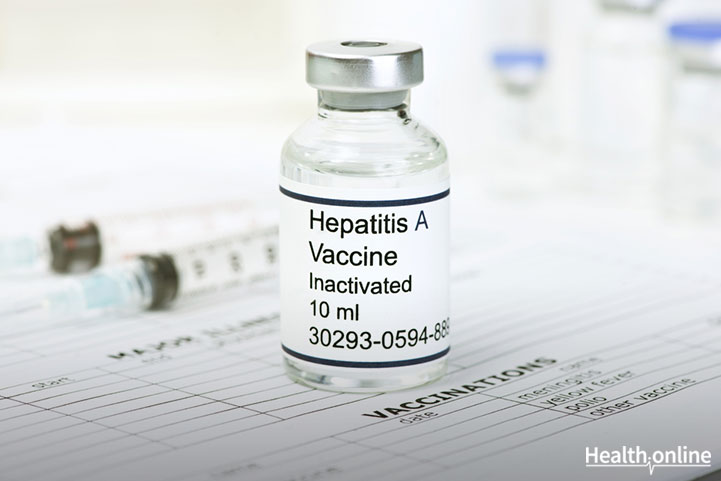
Hepatitis A Vaccine
Rationale
The transmission of hepatitis A takes place by faecal-oral route. This means that it is transmitted through foods, saliva, and unclean hands. If the cooking of foods is not hygienic, if an infected person kisses you by the mouth, you could be infected with hepatitis A virus. Based on its mode of transmission, you could be infected easily and without knowing at all. Hence, you need to be vaccinated with this.
The incubation period of hepatitis A is between 15 to 45 days, with an average of 4 weeks. This means that from the time the virus has entered your system, it will take on the average 4 weeks or one month before you could feel and experience the manifestations of the disease. By the time you are sick, you could not really trace where you got it, considering that it takes some time before the disease takes its toll on your health.
The general manifestations of Hepatitis A are fever, anorexia, nausea and vomiting, fatigue, malaise, arthralgias, myalgias, headache, photophobia, pharyngitis, cough, and coryza. After one to two weeks, you will experience the yellowish discoloration of your sclerae (part of your eyes).
When you are afflicted with hepatitis A, you are highly infectious to other people. Consequently, you are not allowed to work. Economically, you will lose a lot from foregone productivities. Thus, this vaccination is very important.
Generic and brand names
The generic name is: Formaldehyde-inactivated hepatitis A virus (HM175 hepatitis A virus strain) adsorbed onto aluminium hydroxide. The brand name is Havrix 1440.
Composition of the vaccine
For the adult vaccine, it contains hepatitis A viral antigen content of not less than 1440 ELISA units (EI.U.) per 1.0 ml.
Mechanism of action
After the vaccine has been administered, it will stimulate specific immune responses from your system which will lead to the production of antibodies against hepatitis A. Based on clinical studies, 99% of vaccines seroconverted 30 days after the first dose. This means that almost all of those vaccinated will have protection from the disease 30 days after receiving the first dose of the vaccine.
Schedule of administration
The first dose is given at elected date to adult individuals starting at age 19 and onwards. The booster is given at any time between 6 months and 5 years, but preferably between 6 months and 12 months after the primary or first dose.
Indications and usage
This vaccine is indicated and recommended for the following:
- Travelers. Persons travelling to areas where the prevalence of hepatitis A is high. These areas include Africa, Asia, the Mediterranean basin, the Middle East, Central and South America.
- Armed Forces. Armed Forces personnel who travel to higher endemically areas or to areas where hygiene is poor thereby having an increased risk of hepatitis A infection. Active immunization is indicated for these individuals.
- Persons for whom hepatitis A is an occupational hazard or for whom there is an increased risk of transmission. These include employees in day-care centers, nursing medical and paramedical personnel in hospitals and institutions, especially gastroenterology and pediatric units, sewage workers, food handlers, among other jobs.
- Persons at increased risk due to their sexual behavior. Homosexuals, persons with multiple sexual partners.
- Haemophiliacs
- Abusers of injectable drugs
- Contacts of infected persons. Since virus shedding of infected persons may occur for a prolonged period, active immunization of close contacts is recommended.
- Persons who require protection as part of hepatitis A outbreak control or because of regionally elevated morbidity
- Specific population groups known to have a higher incidence of hepatitis A. For example American Indians, Eskimos, recognized community-wide hepatitis A epidemics.
- Subjects with chronic liver disease or who are at risk of developing chronic liver disease. This includes individuals afflicted with hepatitis B, hepatitis C chronic carriers, and alcohol abusers.
Precautions
Vaccination should be postponed if the subject suffers from an acute severe febrile illness. Minor infection, however, is not a contraindication for vaccination.
- This should be used in pregnancy only when clearly needed;
- It should be used during lactation only when clearly needed.
Side effects
A most frequent side effect was soreness at the injection site which spontaneously resolved. Other adverse events were mild redness and swelling at the injection site, which occurred in about 4% of all vaccinations. The systemic adverse events reported by vaccines were essentially mild, most did not last for more than 24 hours and included a headache, malaise, vomiting, fever, nausea, and loss of appetite. These events were reported with a frequency varying between 0.8% and 12.8% of vaccinations. All events spontaneously resolved. Very rarely, fatigue, diarrhea, myalgia, arthralgia, and allergic reactions, including anaphylactoid reactions, and convulsions have been reported.
Dosage and mode of administration
The adult vaccine preparation is known as Havrix 1440. This vaccine intended for adults consists of 1.0 ml suspension which is administered by intramuscular injection at your deltoid muscle.




